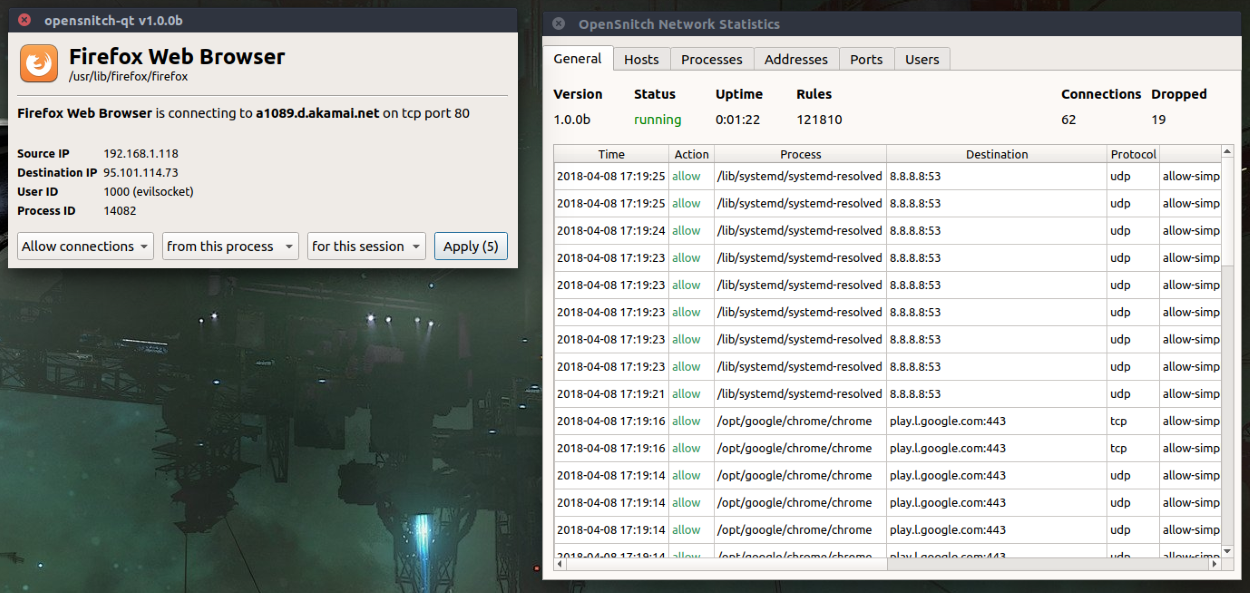Do you know Little Snitch ? Of course you know Little Snitch. This macOS app doescome upprettyoften. It took me a few years between first hearing about it and finally trying it out, but here I am. And it's awesome. Basically, Little Snitch is a system-wide app-level firewall, letting you decide which domain each and every app on your Mac should and shouldn't connect to.
The new APIs don’t permit Little Snitch to inspect or block any OS level processes. Additionally, the new rules in macOS 11 even hobble VPNs so that Apple apps will simply bypass them. So, if Apple makes Little Snitch useless and even bypasses your VPN to call home to report what, where, when and even how you use your Mac then the only way to. How To Block Little Snitch From Calling Home Symphobia Vst Free Download Seventh Heaven Vst Free Download Auto Tune 8 Prices Tse 808 Vst Plugin Download Vst Amp Rack.
If you're even a little privacy conscious, or annoyed by all these ads popping everywhere, you probably use one of the many ad-blocking browser extensions out there. I lost track of which one actually works a while ago. Maybe you also use something like Ghostery to block tracking. I st
But do you really know what rules they apply? Did they decide to allow acceptable ads without asking you? Are they reselling your anonymized and repackaged data? Is it even a legitimate ad-blocking extension? And good luck installing an ad-blocker on that email client to block those pesky e-mail tracking pixels.
Now, you could edit your hosts file to block pretty much anything. I find that cumbersome and annoying. Plus, there's no monitoring to add your own personal favorites. That's where Little Snitch comes in!


One of their latest features? Auto-updated rule groups subscriptions!
So, I installed it, and quickly went on setting it up. Then I started looking for some rule groups to subscribe to. And there weren't many lying around.
Two did stand out. Peter Lowe's adservers list (https://pgl.yoyo.org/adservers/) and Steven Black's host files. They contain lots of rules and domains, blocking both ads and trackers, including social ones. Exactly what I was looking for.
So, without any further ado, here are a few rule groups subscription you can add to Little Snitch to get started!
For the second one, you'll need to pick the .lsrules files you're interested in, access the raw files (should look like https://raw.githubusercontent.com/naveednajam/Little-Snitch---Rule-Groups/master/unified_hosts_base/stevenblack0.lsrules), and paste the urls into Little Snitch's 'New Rule Group Subscription' wizard, one at a time. There are approximately 10k rules per file, so your computer might choke on it for an instant, but it'll be fine.

Oh, and as an added bonus: you can also use it to block all these annoying consent pop-ups that started appearing a year ago.
Hope this helps, and a great day to all of you!
Contents.Background On October 8, 1963, en route to, Cooke called ahead to the North to make reservations for his wife, Barbara, and himself, but when he and his group arrived, the desk clerk glanced nervously and explained there were no vacancies. Sam cooke a change is gonna come download hulk full.
- How to block Little Snitch from calling home and killing numbers:
- 1. The first step is to block Little Snitch with Little Snitch. Create two new rules in Little Snitch as below:
- a) Deny connections to Server Hostname http://www.obdev.at in LS Configuration. The address that will appear if you do it correctly is 80.237.144.65. Save.
- b) Deny connections in LS Config to the application Little Snitch UIAgent (navigate to /Library/Little Snitch/Little Snitch UIAgent.app, any server, any port.
- 2. After that is done, open the Terminal (in your Utilities) and paste in:
- sudo /Applications/TextEdit.app/Contents/MacOS/TextEdit /etc/hosts
- (Hit return and type in your admin password). A TextEdit window will open behind the Terminal window. Command+Tab to it - this is your hosts file.
- 3. Place your cursor at the end of the text there, type or leave one vertical space and paste in the following:
- 4. Close TextEdit, hit Command+Tab to return to the Terminal window, and paste in the following:
- 5. Hit the Return key and quit Terminal. You're finished now.
- 6. Easy, isn't it. If only everyone would do this, the developer would cease and desist from killing the number that you personally are using successfully on your Mac. At least until the next version is released…
Find out which applications are phoning home or collecting and sending data on your Mac using this handy utility.
- Arguably Little Snitch exists because it’s relatively straighforward for applications to gain insecure outbound or indeed two way access in MacOS, and as MacOS software is often closed source, you don’t have the opportunity to examine it to see what it’s doing.
- Mar 08, 2013 Little Snitch is an advance firewall application exclusively for OS X that allows you to control where an application can communicate to on the Internet. You can get Little Snitch from Objective Development for $34.95.
Usbmuxd Little Snitch Game
Little Snitch Network Monitor is a macOS application that tells you exactly where your data is going to and coming from on the internet. This is a useful tool for rooting out malware on your computer or identifying which applications are hogging all your data. It can also tell you if a website is hijacking your computer to mine cryptocurrency, or otherwise redirecting your data to shady locales.
Little Snitch 1.2.2 strikes a good balance between automatically blocking potential problems and letting users decide what connections to allow. This is a great tool for anyone who uses a wide.
Little Snitch is easy to use and free to try. In this quick overview, I’ll show you how it works and what it does.
Where is my data going?
The most prominent element of the Little Snitch window is the global map that shows the geographic location of where your data is going to and coming from. In most cases, this won’t mean much—servers are located all over the globe, and just because your computer sends a packet or two to Romania or Switzerland isn’t particularly suspicious.
But if you are noticing strange traffic from an unknown application or a high volume of data being sent to a particular location, then it might be worth looking into. For example, it’s completely normal for Amazon Prime Video to be sending a bunch of data from Seattle since that’s where Amazon’s located. But it’d be more peculiar if your banking or financial application or website were sending data to North Korea at odd hours of the night.
How much data am I sending/receiving?
If it feels like you’re using up more data than you should on a monthly basis, Little Snitch can provide some insight. On the right-hand side is the summary which shows your overall data upload and download numbers. It also shows some statistics that highlight which connections are sending and receiving the most data.
For me, my Backup and Sync from Google is the major data hog. That’s pretty much expected since I use it to sync my photos and videos from iCloud to Google Photos. Red flags in this section would be unfamiliar applications sending lots of data, or applications sending lots of data when you’re not using them. This may be a case of bloatware or it could be malware or a virus. Or, it could be an application that you forgot you had and it’s working as designed.

Which programs are sending and receiving data?
Block Little Snitch From Calling Home Depot
On the left-hand side, you can see an exhaustive list of all connections sending amounts of data large and small. The bulk of the items here will be 100% normal system processes—stuff that Apple uses just to make macOS run smoothly. When you expand these out, you’ll notice they are phoning home to Apple.com, which means you can usually ignore it.
Block Little Snitch From Calling Home Song
What’s interesting are the annoying third-party programs that occasionally send and receive data in the background. Many applications will have updaters or “helpers” that stay in contact with the developers servers for various reasons, such as checking for application updates. The amount of data is usually small, but if this bothers you, you can block these connections (see below).
Which websites are collecting my data or sending me data?
This one’s a bit eye-opening: when you visit a website, you’re making far more connections than just to the URL in your browser bar. Any given page may have dozens or more elements, scripts, and content from other servers. In some cases, this is perfectly normal. For instance, at groovyPost.com, we host our images on a content delivery network to help balance our server loads and make pages load faster depending on your geographic location.
Usbmuxd Little Snitch Lyrics
But when you expand out your Google Chrome item, you’ll see pings from advertisers, analytics services, and other sites as well. Usually, this isn’t a cause for alarm—this is just the nature of the internet. Most websites and publishers are upfront about their use of third-party analytics services and advertising platforms.
That being said, there is potential for abuse. Last year, reports of websites hijacking your CPU to mine for Bitcoin came out. This is called “crypto jacking” and although it’s not really a privacy threat, most consider it unethical to hog your resources so publishers can profit. Little Snitch will tell you if a website is surreptitiously using your web browser to mine cryptocurrency by showing you traffic to domains like Coinhive.com.
Allowing and Denying Connections
The recommended operation mode for Little Snitch is “Silent Mode – Allow Connections.” This lets you watch the traffic going across the transom without actively interfering with any of it. The other options: “Silent Mode – Deny Connections” and “Alert Mode” will quickly grind everyday internet activity to a halt.
The idea is that if you do find a suspicious connection, you can choose to block it on a case by case basis. To do that, simply right-click the connection and choose Deny Connection. Little Snitch will block data from that connection.
Usbmuxd Little Snitch Game
Conclusion
Little Snitch is a handy application for monitoring and managing your incoming and outgoing network data on your Mac. The Demo Mode is pretty much unrestricted—pretty much the only limitation is that it will turn itself off every three hours, and you have to restore it. This means that if you suspect that you have malware on your computer or that a website is up to no good, you can use the Demo Mode of Little Snitch to investigate completely for free. If you do want to get a full license, it’ll cost you a little under $50.
Usbmuxd Little Snitch Lyrics

Little Snitch does a great job of what it does. What it doesn’t do is monitor traffic on other devices on your network, including internet of things devices, smart home devices, voice-activated assistants, smart TVs, tablets, smartphones, etc. For those devices, you’ll need another solution which we’ll cover in a future post.
Usbmuxd Little Snitch 2
Little Snitch Block Calling Home Software
Let us know in the comments if you give Little Snitch a try.